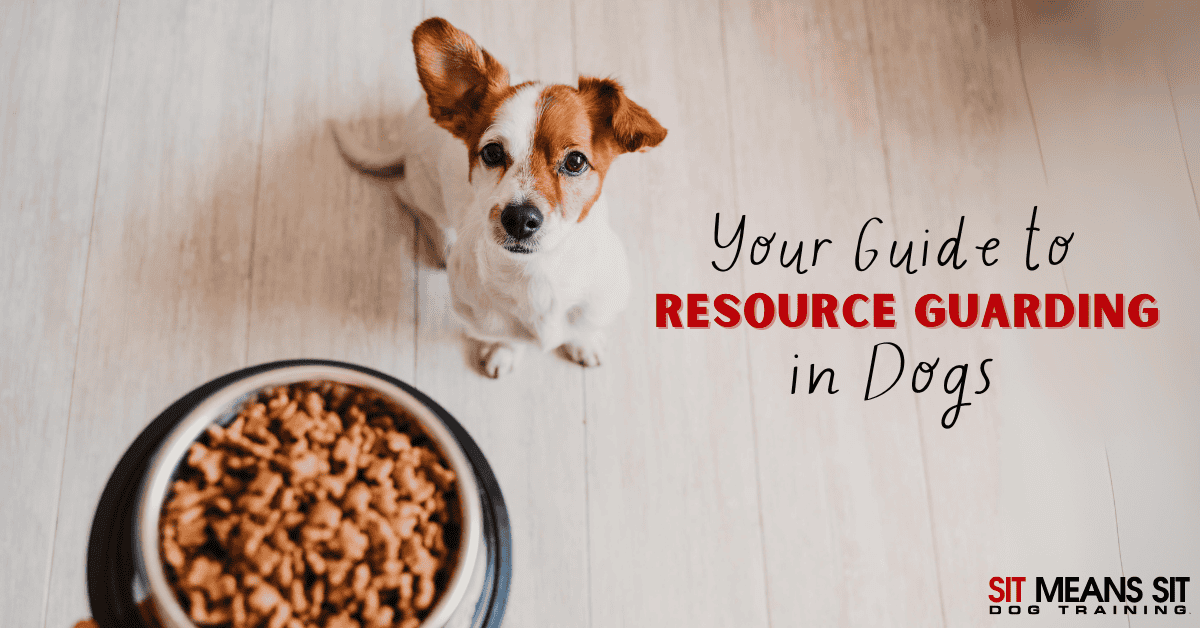Does your dog give you funny looks or growl at you when you come near their toys? Do they see you coming and eat all of their food as fast as they can? These are signs that mean your dog feels their valuable items are at risk of getting taken away, which is why dogs resource guard. Keep reading to learn about resource guarding and what you can do to help your dog.
What is Resource Guarding?
Resource guarding is a normal canine behavior that started in the wild when dogs were scavengers looking for food sources. This behavior can still appear in our furry friends today, and while sometimes it is very subtle, other times it can be much more aggressive. Resource guarding is a dog’s way of protecting something they place a high value on or believe may be scarce. This can be anything from their food, a toy, their dog bed, a favorite person, or even a stick they found out in the yard. This can make it difficult to predict, but don’t worry. These signs and patterns will prepare you to spot and address any resource guarding you observe in the future.
Signs of Resource Guarding
There are many different forms of resource guarding. Some of the most common ways a dog will show they are protecting their valuables are:
- Aggression in the form of growling, biting, showing teeth, or snapping
- Intentionally eating very quickly
- Hiding their “treasure”; dogs may position their body to block or hover over the item or may run and hide the item elsewhere
What Causes Resource Guarding?
There are many things that can cause resource guarding in dogs. Some of the most common causes include:
- Multiple Dogs in the Home: Younger dogs may observe resource guarding from other pups in the home and pick up this habit.
- Genetics: Some dogs are born with the genetic tendencies to guard their perceived belongings.
- Additions to the Family: A growing family may cause a dog to resource guard in order to keep what is theirs.
- Scarce Resources: If a canine fears not having enough food or if there is only one toy to go around, this can lead to resource guarding. Your pup may feel the need to protect these few necessities. Additionally, a dog who has experienced a lack of resources in the past may still be fearful, even if it now has plenty.
Techniques to Avoid and Stop Resource Guarding
One of the most common things canines resource guard is their food. One way to prevent this is to allow your dog to eat in peace. Some dog owners believe that sticking a hand in a food bowl or holding it for your pup will prevent resource guarding, but this often has the opposite effect. Interfering during meal times may bother your dog or create possessiveness over the food, so it’s best to leave them alone until they’re done eating.
If your pup displays food aggression, you may need higher-value treats to garner their attention. Get these treats ready and stand as close as you can to Fido without triggering the aggression. Toss the treat near your pup for them to eat, then slowly work your way closer. With consistent efforts, you can facilitate the development of positive associations of your presence around something your pup values- their food. Using an item of higher trading value, such as your pup’s favorite snack instead of their everyday bowl of kibble, will help Fido enjoy the experience and let their guard down.
When to contact a professional
If your pup’s resource guarding is overly aggressive, contact a professional before the behavior worsens. It is particularly important to get professional help regarding resource guarding if you have children in the house. A child is more likely to upset a dog by taking things from them, which can create a risky situation. If your pup’s behavior is mild enough to ignore it, try staying away from your pup when they have their valuable items or removing certain items from the house.
Now that you’ve read this guide, you should be well-prepared to spot research guarding in your pup and take action if it persists.
Check Out These Related Blogs for More Training Tips!
How to Use Dog Communication Buttons
Foes to Friends: Tips for Fostering a Positive Dog & Cat Relationship

